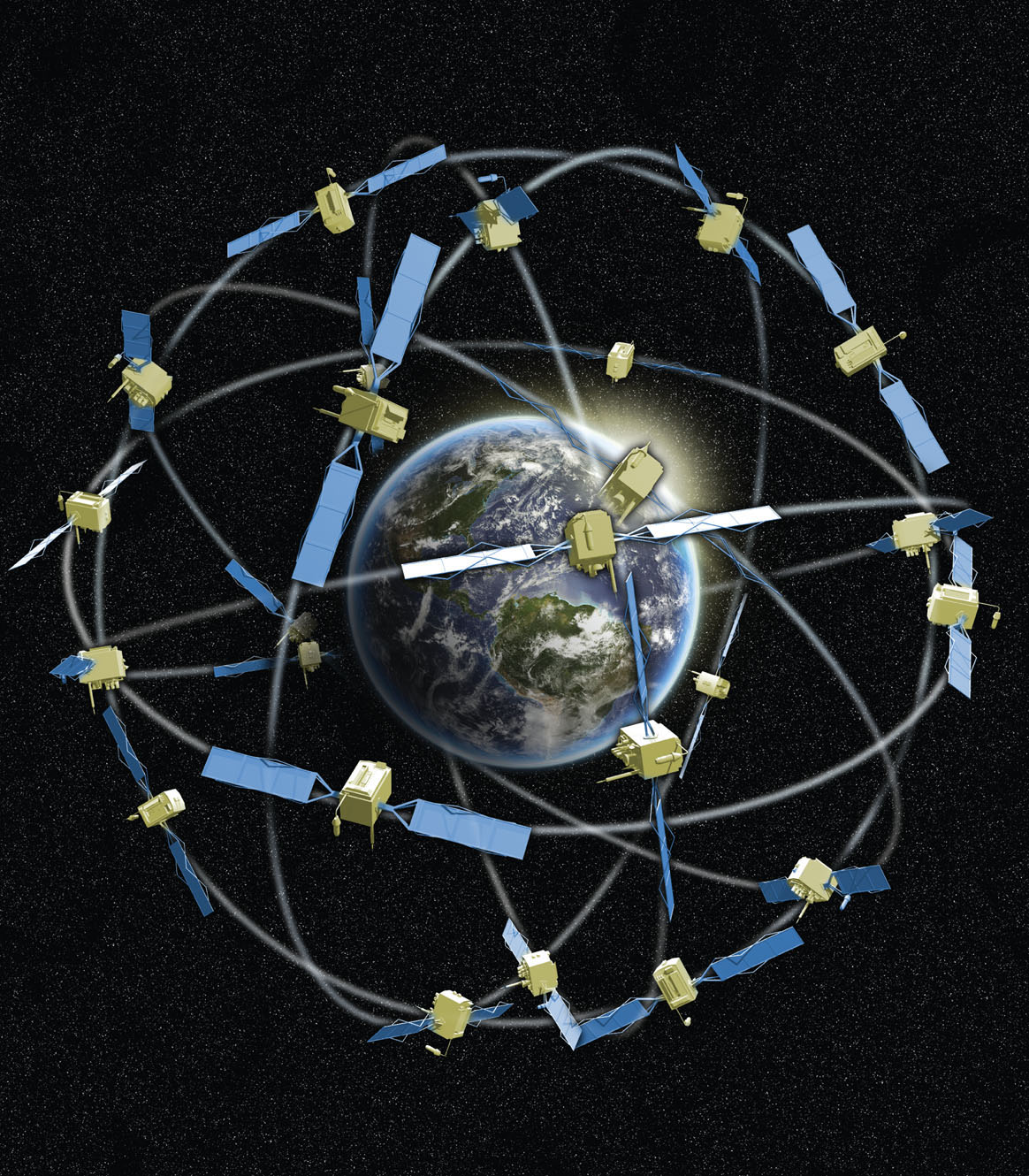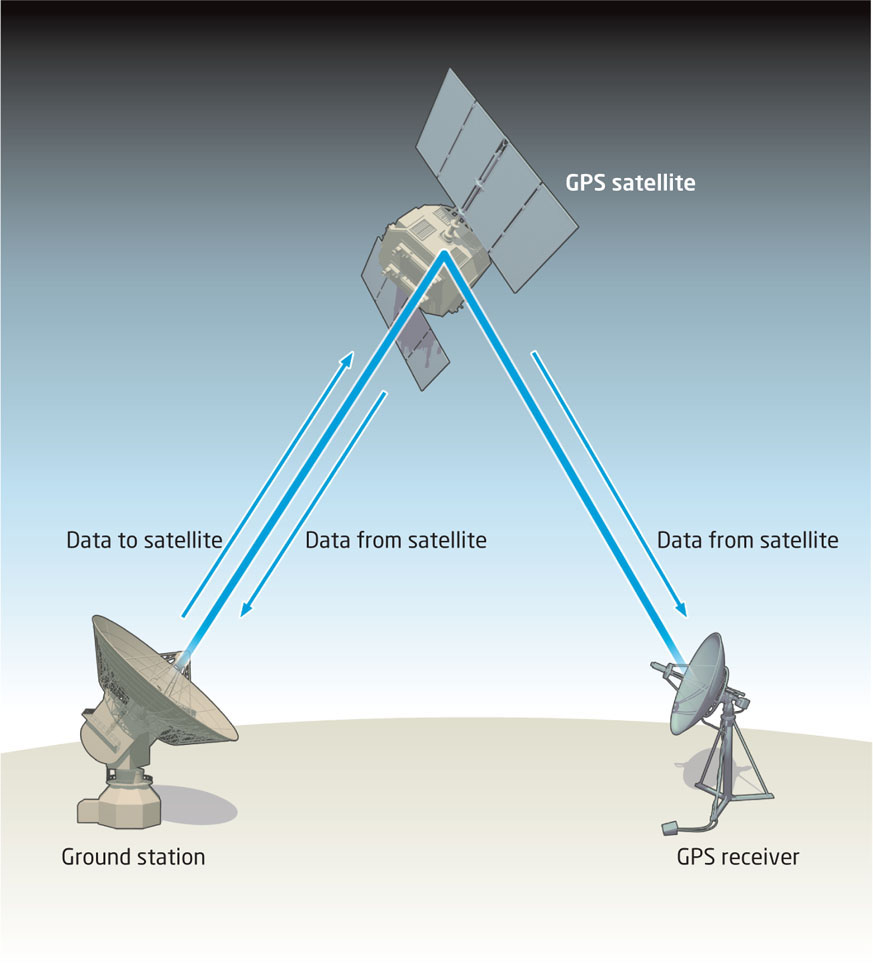4.2 
What Does the Global Positioning System Consist Of?

Finding your position on the ground with GPS relies on three separate components, all operating together: a space segment, a control segment, and a user segment.
Space Segment
space segment one of the three segments of GPS, consisting of the satellites and the signals they broadcast from space
constellation the full complement of satellites comprising a GNSS
The space segment is made up of numerous GPS satellites (also referred to as “SVs” or “Space Vehicles”) orbiting Earth in fixed paths. GPS satellites make two orbits around Earth every day (their orbit time is actually about 11 hours and 58 minutes) at an altitude of 20,200 kilometers (12,552 miles). The satellites are set in a pattern of specific orbits called a constellation, in which the satellites are specifically arranged for maximum coverage over Earth (Figure 4.1). The way the constellation is designed allows for a person to be able to receive enough GPS signals to find their location wherever they are on the planet. Twenty-four satellites is the minimum for a full constellation, and there are currently several additional operational GPS satellites in orbit to improve global coverage.

82
The job of GPS satellites is to broadcast a set of signals down to Earth from orbit. These signals (we’ll discuss this later) contain information about the position of the satellite and the precise time at which the signal was transmitted from the satellite (GPS satellites measure time using extremely accurate atomic clocks carried onboard). The signals are sent on carrier frequencies L1 (broadcast at 1575.42 MHz) and L2 (broadcast at 1227.60 MHz). Additional carrier frequencies are planned for future GPS upgrades, including an L5 frequency to be used for safety-of-life functions. You need to have a direct line of sight to the satellites to receive these frequencies (which means that you have to be in the open-air, not indoors).
83
Control Segment
control segment one of the three segments of GPS, consisting of the control stations that monitor the signals from the GPS satellites
The control segment of GPS represents a series of worldwide ground stations that track and monitor the signals being transmitted by the satellites. These ground stations, also known as control stations, are spread out to enable continuous monitoring of the satellites. The control stations collect the satellite data and transmit it to the master control station at Schriever Air Force Base. In the control segment, corrections and new data are uploaded to the satellites so that the satellites will be broadcasting correct data. The control stations also monitor the satellites’ positions, and relay updated orbit information to the satellites (Figure 4.2).

84
User Segment
user segment one of the three segments of GPS, consisting of the GPS receivers on the ground that pick up the signals from the satellites
channels the number of satellite signals a GPS unit can receive
single frequency a GPS receiver that can pick up only the L1 frequency
dual frequency a GPS receiver that can pick up both the L1 and L2 frequency
The user segment represents a GPS unit somewhere on the Earth that is receiving satellite signals. The receiver can then use the information in these signals to compute its position on Earth. A key component of a GPS receiver is how many channels the receiver has—the number of channels reflects the number of satellites the receiver can obtain signals from at one time. Thus, a 12-channel receiver can potentially pick up signals from up to 12 satellites. The type of unit you’re using is also important—a single frequency receiver can only pick up the L1 frequency, but a dual frequency receiver can pick up both L1 and L2. One thing to keep in mind about the receiver is that no matter what size, capabilities, or number of channels it has, a receiver (like the name implies) can only receive satellite data—it can’t transmit data back up to the satellites. This is why GPS is referred to as a one-way ranging system: satellites broadcast information, and receivers receive it.